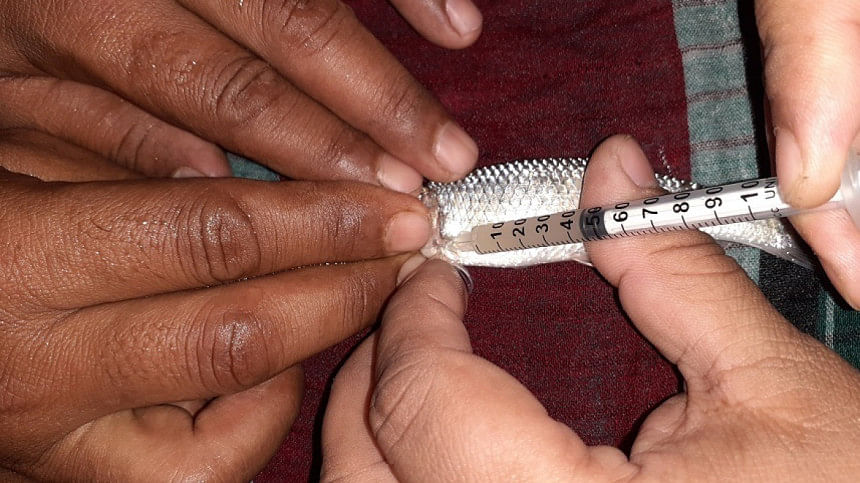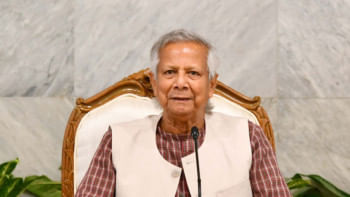Gotali fish: From endangered to potential recovery

Gotali fish, declared endangered by the International Union for Conservation of Nature (IUCN) a few years ago, is likely to be saved from extinction. Scientists at the freshwater substation of the Bangladesh Fisheries Research Institute (BFRI) in Saidpur upazila of Nilphamari have recently developed a technique for its artificial breeding and fry production.
The IUCN declared this indigenous fish species, scientifically named Crosso Cheilus Latius and belonging to the Cyprinidae family, endangered in 2015. "We took the matter seriously and emphasised the need for measures to save it," said Dr Azhar Ali, principal scientific officer of the BFRI substation.
The decline in population is caused by pollution in waterbodies, the use of current nets, electric fishing, and above all, the adverse effects of climate change. Bangladesh has 261 species of popular freshwater fish, of which 64 are critically endangered, according to BFRI sources.
This fish is also known in some parts of the country as Tatkini or Kala Bata and is highly regarded for its taste and high nutritional value. It was once abundant in the Teesta basin area in the northern part of the country, as well as in the streams and hilly rivers of Mymensingh and Sylhet, the sources added.
The fish has a slender lower body and a flat head, with a maximum length of 10.2cm and a weight of 15-17gm.
"For conserving its gene pool, we have been working since 2023 and carried out comprehensive research by collecting live samples weighing 5-6gm from the Teesta and Buri Teesta rivers during April and May," said senior scientific officer Dr Sonia Sharmin.
"The collected samples were then preserved in research ponds at the local BFRI campus for a year for domestication and adaptation to make them fit for breeding," she continued.
At this stage, various natural and synthetic inducing agents were tested to evaluate breeding performance, such as ovulation, fertility, and hatchability.
During the breeding season in July and August, mature male and female fish are collected from the research ponds and kept in concrete tanks in the hatchery under gentle water flow before being injected with synthetic hormones.
Following other procedures, fish fries are produced from the eggs and fed a mixture of boiled egg yolk and water before being moved to a nursery after six to seven days.
The fries grow to 5-6cm in 45-60 days and are then released into ponds for rearing, where 65-70% of the fries survive, said scientists.
A five-member team conducted the research, headed by principal scientific officer Dr Azhar Ali. Other members include senior scientific officers Dr Sonia Sharmin and Maliha Hossaim Mou, and scientific officers Srebas Kumar Saha and Md Abu Naser.
Dr Azhar Ali said, "We will distribute the fish fries among farmers after a certain period so that private and government hatcheries can produce them on a commercial basis."
Mentionable, the freshwater substation of BFRI in Saidpur was awarded a medal in 2017 for developing the technique of artificial breeding and fry production of another popular native fish variety, Tengra.

 For all latest news, follow The Daily Star's Google News channel.
For all latest news, follow The Daily Star's Google News channel. 



Comments